Ed. Note: At 80 years ago today, young men stormed the beaches of Normandy in the opening moves of Operation Overlord. Colloquially known as D-Day, troops from the United States, United Kingdom, Canada and other allied countries began landing in France in a massive amphibious assault code-named Operation Neptune. Across five landing zones, men rushed out of landing craft and into a tangle of traps and withering fire.
In today’s article, Tom Laemlein describes the nightmarish German defenses that these heroes faced. It was a deadly mix of guns and obstacles that were intended to stop the Allied invasion before it could get a foothold.
The Atlantic Wall took more than two years to build, and yet it was cracked open in just a single day. And while that fact may make the construction of the wall seem pointless, it is important to remember that all the bunkers, barbed wire, mines, and tank traps did not give “Festung Europa” a roof. When Germany lost air superiority over most of France, the power of Allied logistics could overwhelm the Atlantic Wall at its weakest points. The Luftwaffe never seriously threatened the invasion beaches.
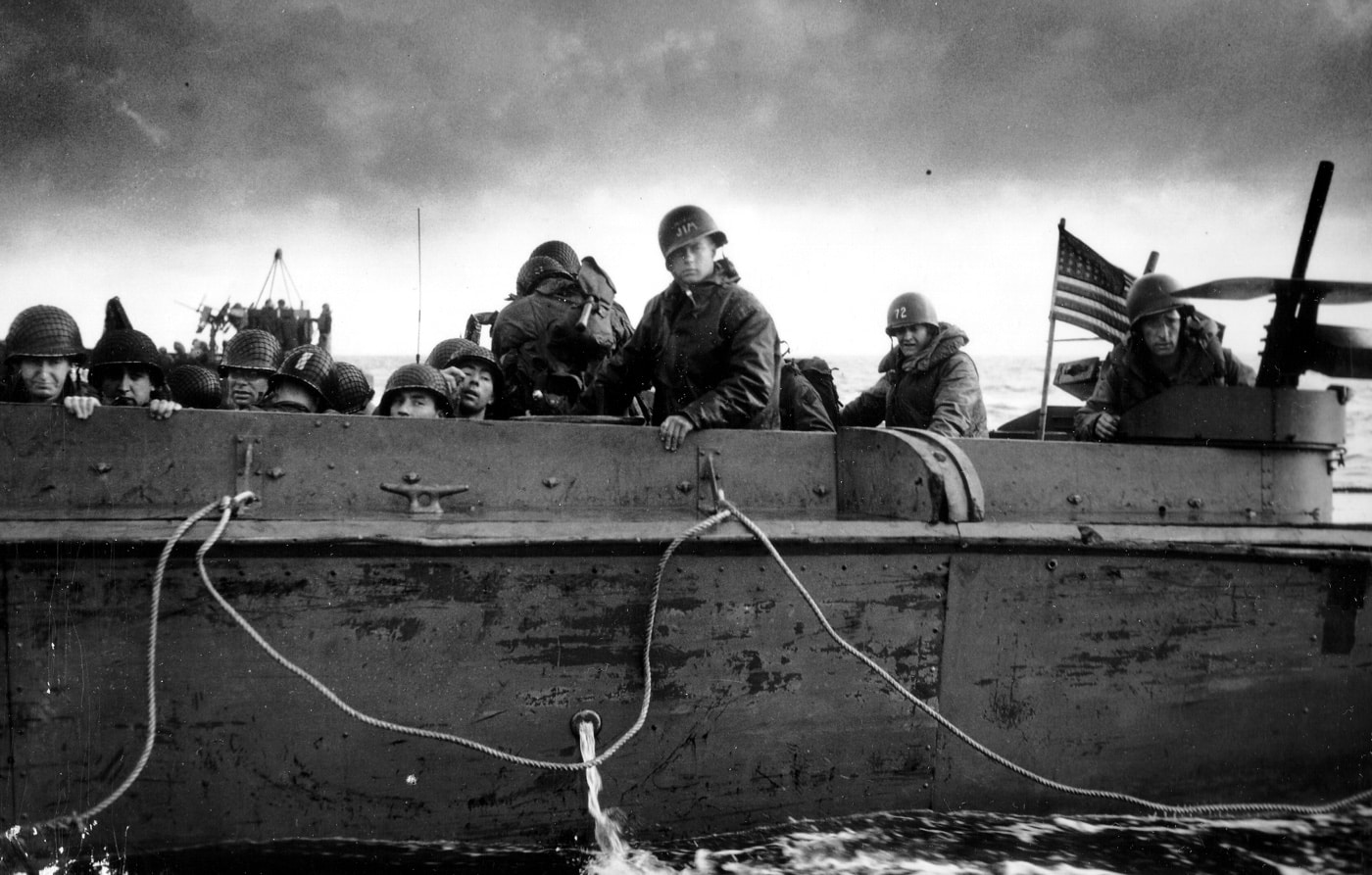
Victory on the beaches at Normandy was a huge win for Allied combined arms. The incredible preparations required to achieve and maintain a foothold in France, without suffering grievous losses, and then sustain it with monumental supply efforts, cannot be overstated.
Despite air and naval superiority, the Atlantic Wall was not easy to crack. If the assault on June 6, 1944, had failed to breach the wall, the cost to the Allies would have been catastrophic.
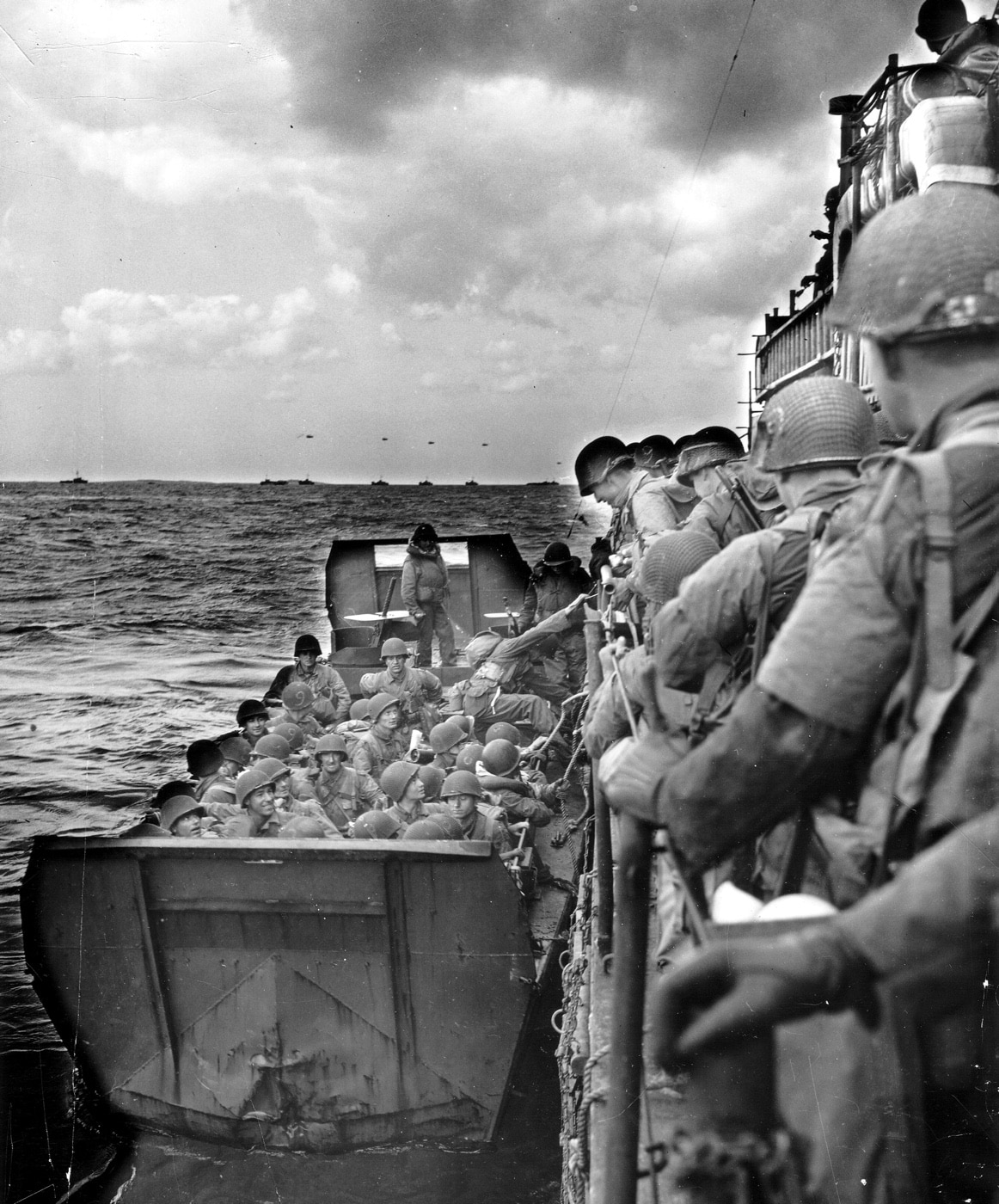
Germany’s extensive defense line, parts of which were still under construction in June 1944, forced the Allies to use innovative engineering as the ultimate siege engine. The unique weapons designed for D-Day would have a lasting impact on the road to Berlin. Even so, the assault troops would have to face the massive collection of mines, barbed wire, machine guns, mortars, light and heavy artillery, and fortifications with reinforced concrete walls up to five feet thick.
Working with The Armory Life editors, I’ve created a tour of the Atlantic Wall, and a primer on its many weapons.
The Lessons of Dieppe
On August 19, 1942, British and Canadian forces launched Operation Jubilee, a massive and incredibly bloody raid on the French port of Dieppe. The raid was a jumble of objectives, with some brief successes, but ultimately the terrible sting of brutal losses.
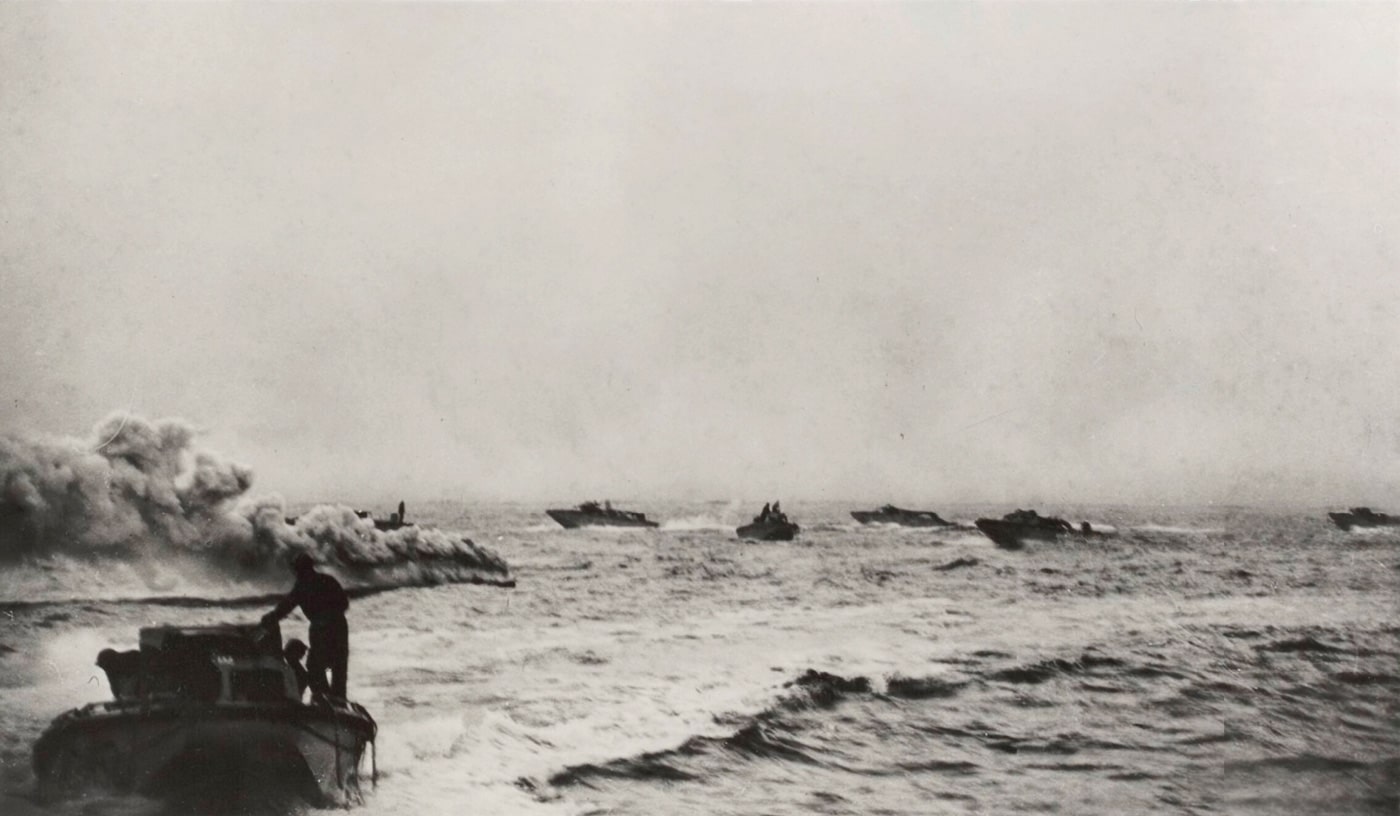
Of the 5,000-man Canadian raiding force, 64% were casualties. Of the 1,000 British commandos, 247 were lost. A total of 30 of the new Churchill tanks deployed at Dieppe were lost. The Royal Navy lost a destroyer as well as 33 landing craft.
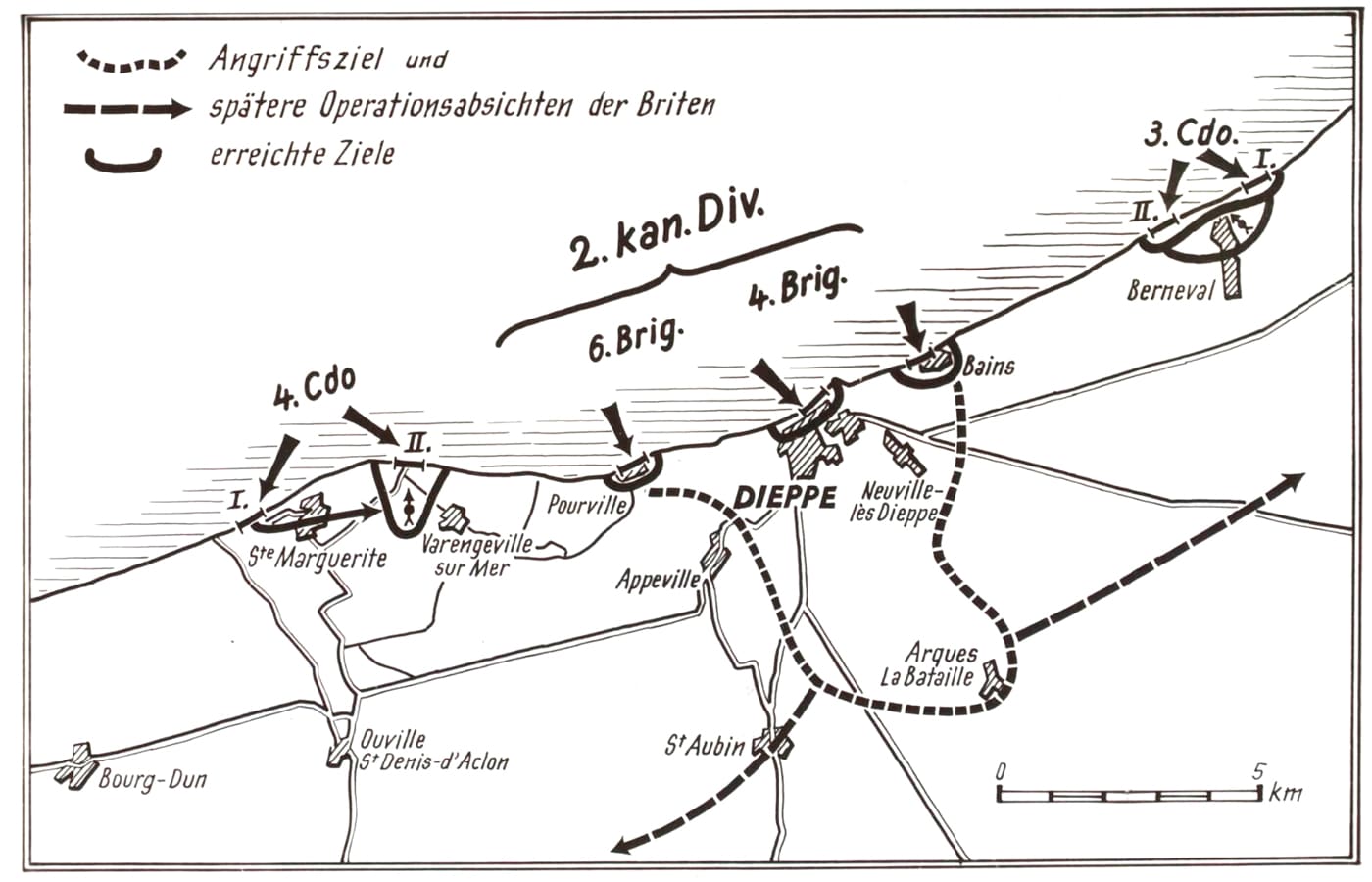
In the massive air battle above, the RAF maintained a measure of air superiority, or at least parity, but lost 106 aircraft and 64 pilots in the process. It was a difficult day with hard lessons learned on both sides. The impact on the D-Day landings less than 22 months later, was incalculable.
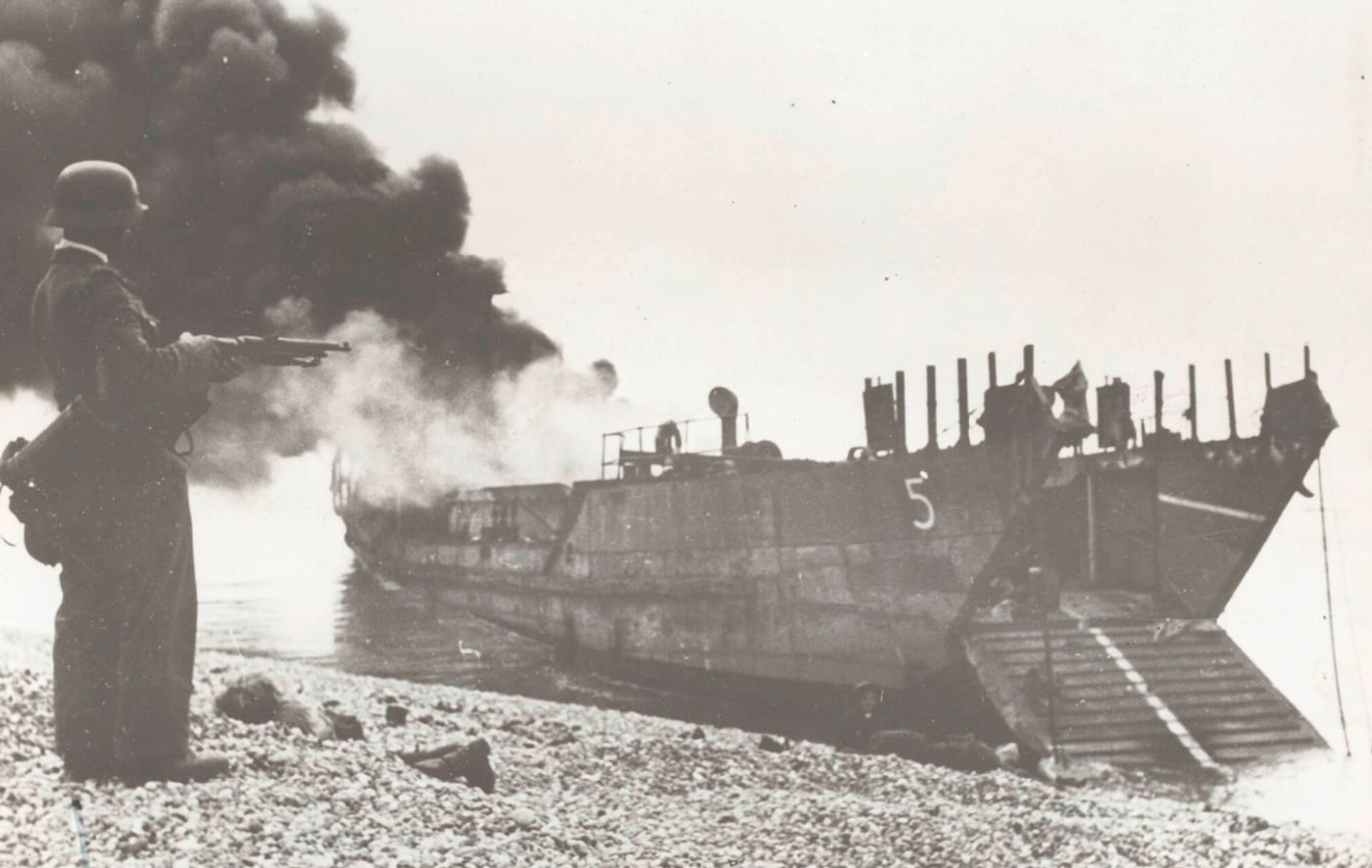
Field Marshal von Rundstedt commented on the Dieppe raid: “Just as we have gained the most valuable experience from the day of Dieppe, the enemy has learnt as well. Just as we evaluate the experience for the future, so will the enemy. Perhaps he will do this to an even greater extent because he has paid so dearly for it.”
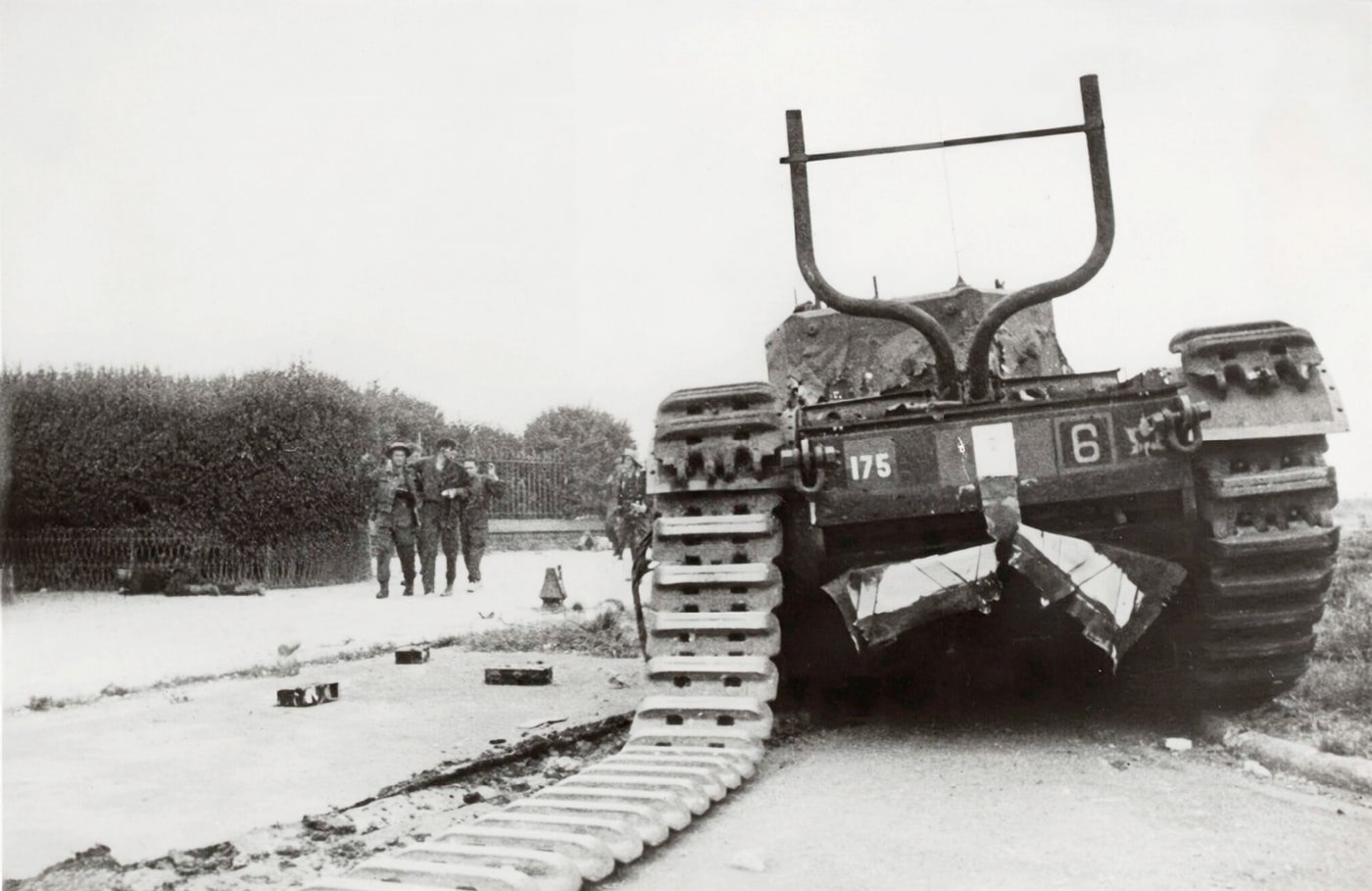
On the Allied side, Lord Mountbatten justified the losses at Dieppe as a down payment on the successes achieved on the Normandy beaches: “I have no doubt that the battle of Normandy was won on the beaches of Dieppe. For every man who died at Dieppe, at least 10 more must have been spared in Normandy in 1944.”
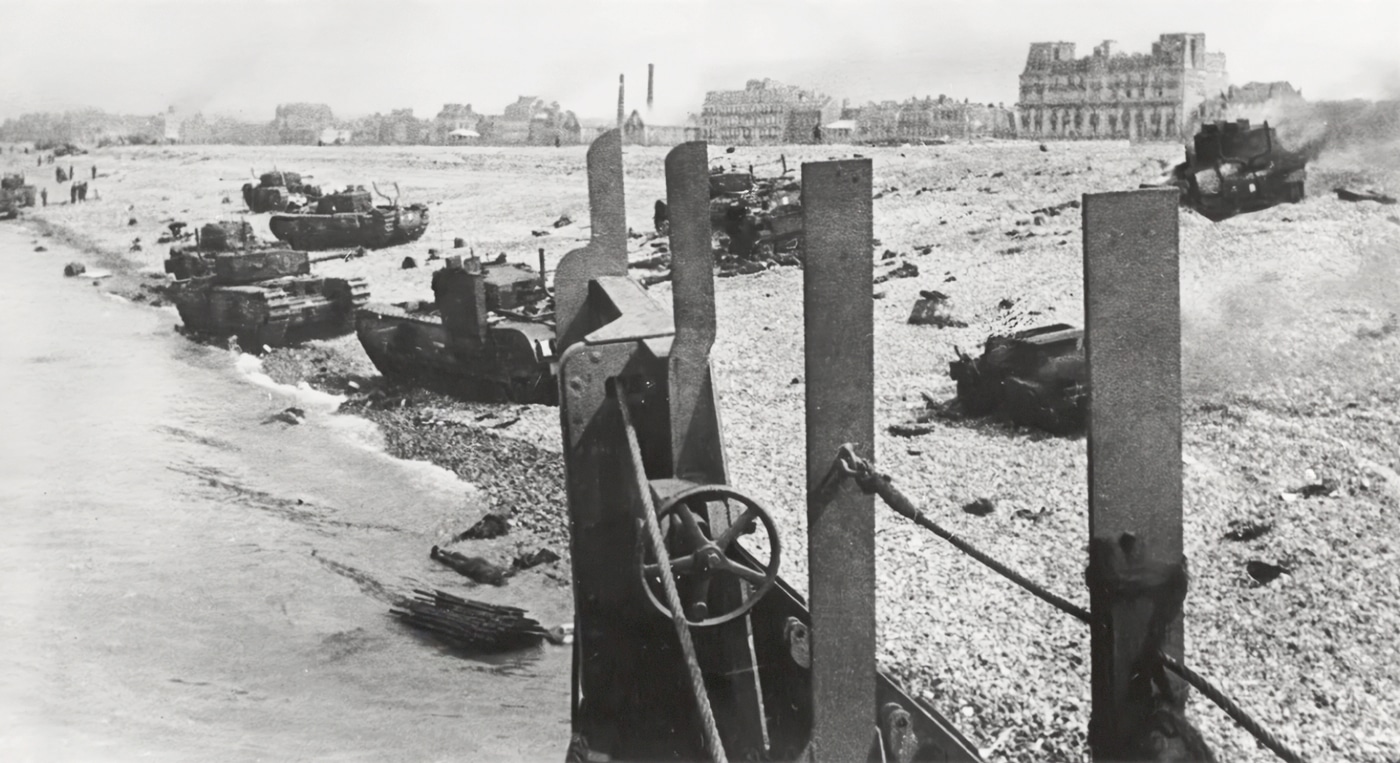
U.S. Studies of German Defenses
After Dieppe, the Germans expanded their efforts at creating fixed fortifications. Later, Rommel and von Rundstedt agreed that the Atlantic Wall was ultimately a bluff, but anything that delayed the Allies from invading, or could keep them backed up on the beaches would serve their purposes.
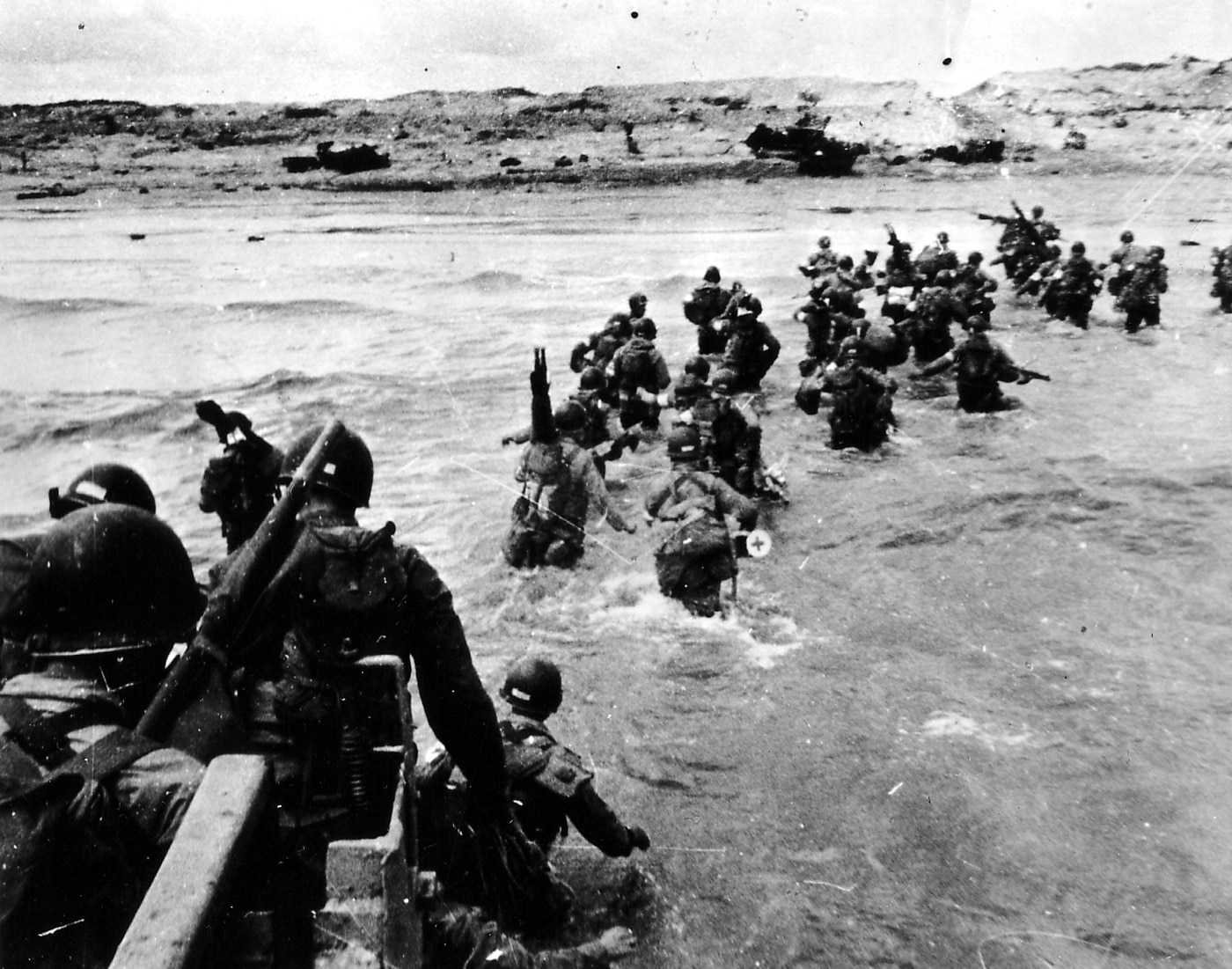
To give you an in-depth look at the German defenses on the Omaha and Utah beaches, I turned to US Army documentation for some primary resource material. In September 1945, the US War Department’s Historical Division produced “Omaha Beachhead”, the seventh in a series of studies called “American Forces in Action”.
A similar title “Utah Beach to Cherbourg” was produced shortly afterwards. Both studies provide detailed descriptions of the German beach defenses based on pre-invasion intel and after-action assessments.
Omaha Beach
The enemy recognized that the Omaha sector was more favorable for attack from the sea. Consequently, 12 strongpoints were constructed in a way to bring direct fire on the beach. The enemy’s tactical plan for meeting an assault was suggested by the disposition of his coastal defenses, which were concentrated at the beaches and were not developed in any depth.
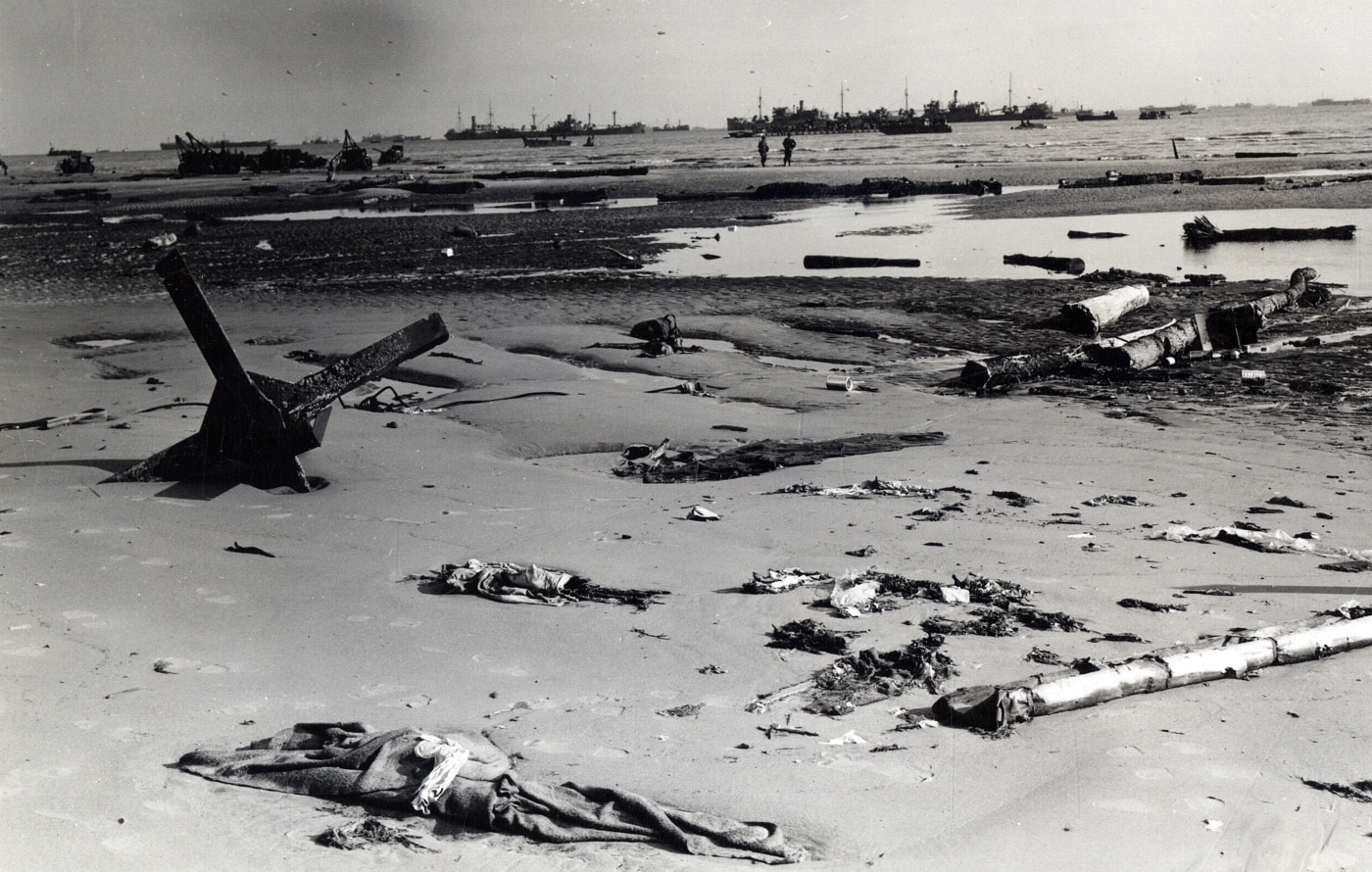
Every evidence pointed to the conclusion that the Germans intended a maximum effort on the coast, seeking either to smash the attack at the water’s edge or, at worst, to hold the assaulting forces near the beach until mobile reserves could arrive to finish them off.
The beach defenses were designed to stop the attacking force by obstacles and mines, both on the tidal flat and the beach shelf, while it was annihilated with concentrated fires from every type of defensive weapon.
Passive Defense Obstructions
In 1944, at all main beaches practicable for massive landings, the Germans had begun to construct an elaborate system of obstacles along the tidal flat between the high- and low-water marks. These obstacles, designed to wreck or block off landing craft, had begun to appear in the Omaha sector early in April, and work on them was still in progress by D-Day.
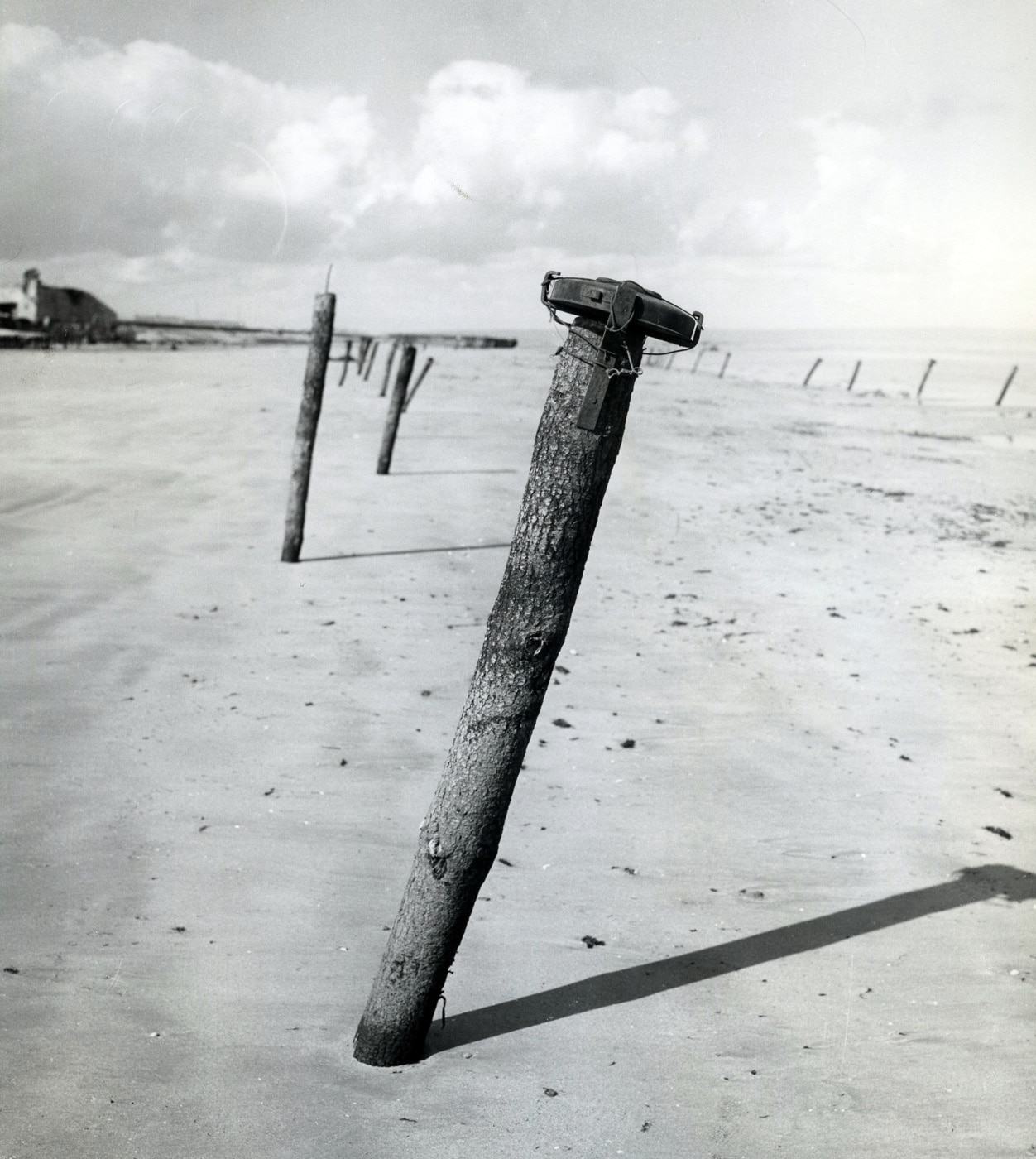
The first band of obstructions consisted of a series of Element C, gate-like structures of reinforced iron frames with iron supports, on rollers, about 250 yards out from the high-water line. The main support girders were 10 feet high, and waterproof Teller mines were lashed to the uprights.
The second band, 20 to 25 yards landward, was composed of heavy logs driven into the sand at such an angle that the mine-tipped ends pointed seaward, or of log ramps, reinforced and mined. This belt was found to be more formidable than had been anticipated.
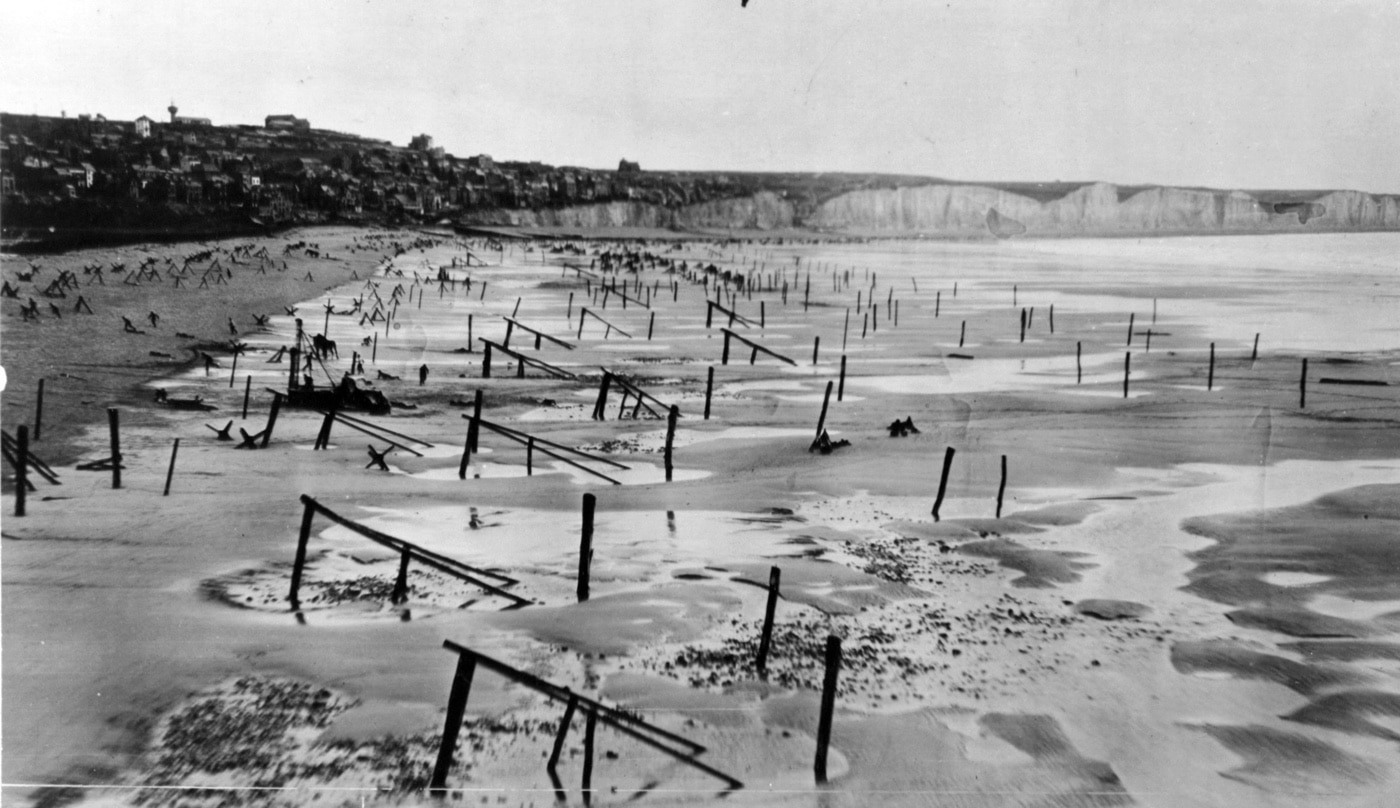
At 130 yards from shore, the final row of obstructions included hedgehogs, about five and one-half feet high and made of three or more steel rails or angles, crossed at their center and so strongly set that the ends would crush in the bottoms of landing craft.
None of these bands were continuous. Instead, the elements were staggered at irregular intervals. There were no mines in the tidal sands.
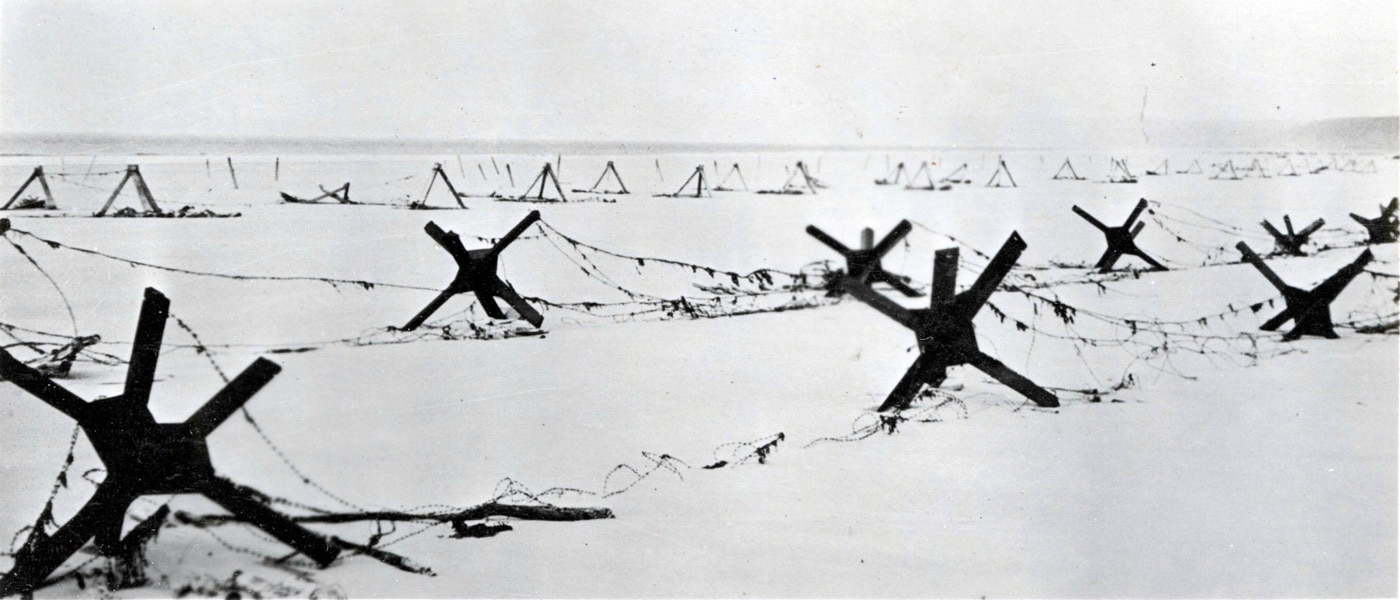
Shortly after work began on these obstacles, Allied intelligence learned of the new development, and Allied planning staffs were preparing measures to meet this new and serious complication in the assault problem. If the attacking troops reached the bank of shingle at the edge of the tidal sands, they would still have to cross the narrow shelf of beach flat to reach the bluffs.
Barbed Wire and Mines
The Germans made liberal use of wire and mines to slow up movement beyond the shingle. Along most of the beach, a row of concertina wire was placed just to landward of the shingle; at the western end, the wire was on top of the sea wall.
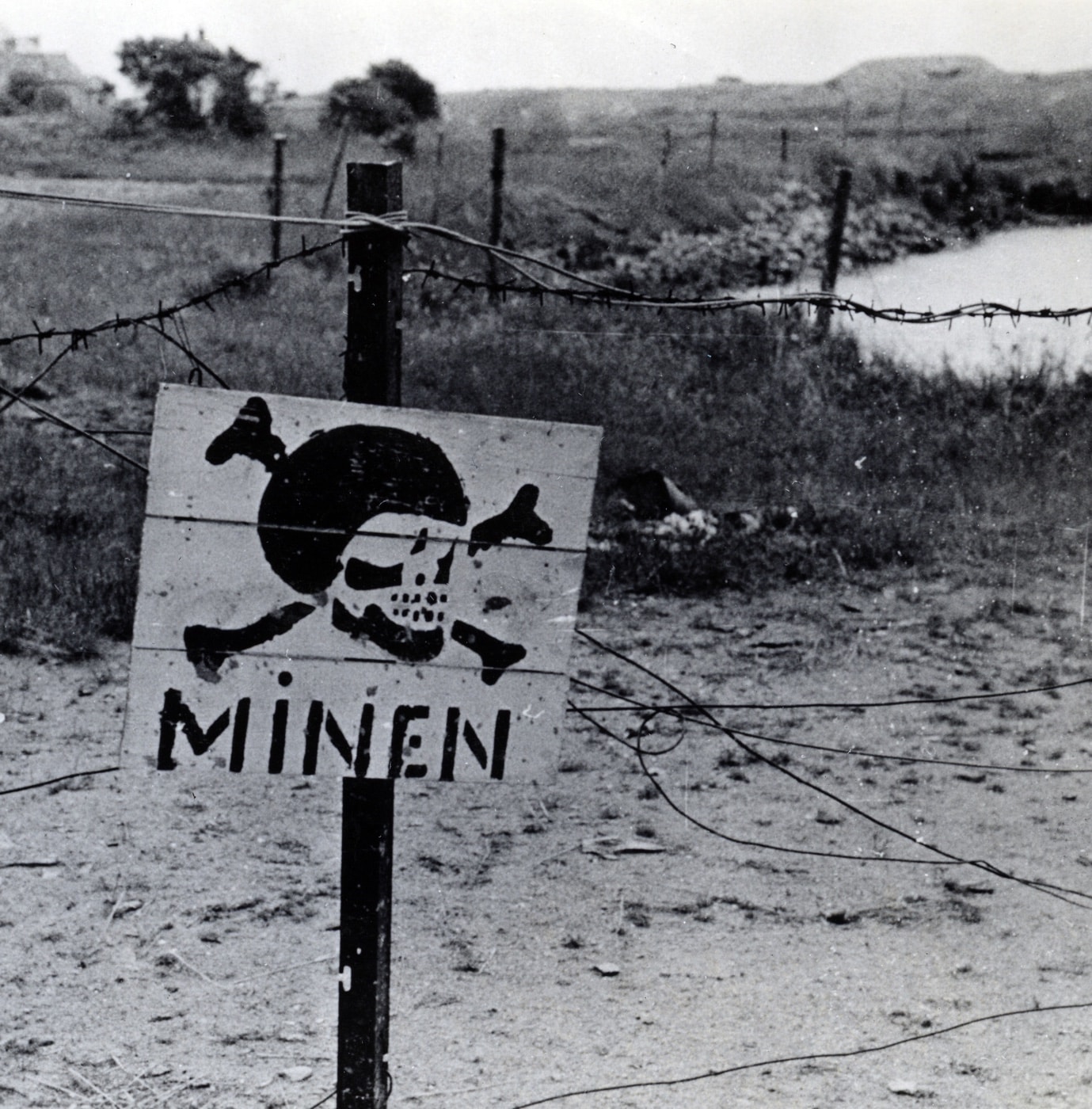
Irregularly placed minefields, usually posted with warning signs, lay in the flat ground behind the wire and on the bluff slope. Some explosive charges were covered by rock and set off by trip wire, sometimes buried in the concertina. Some dummy minefields consisted of scrap iron planted below the ground surface, but most of the fields were real.
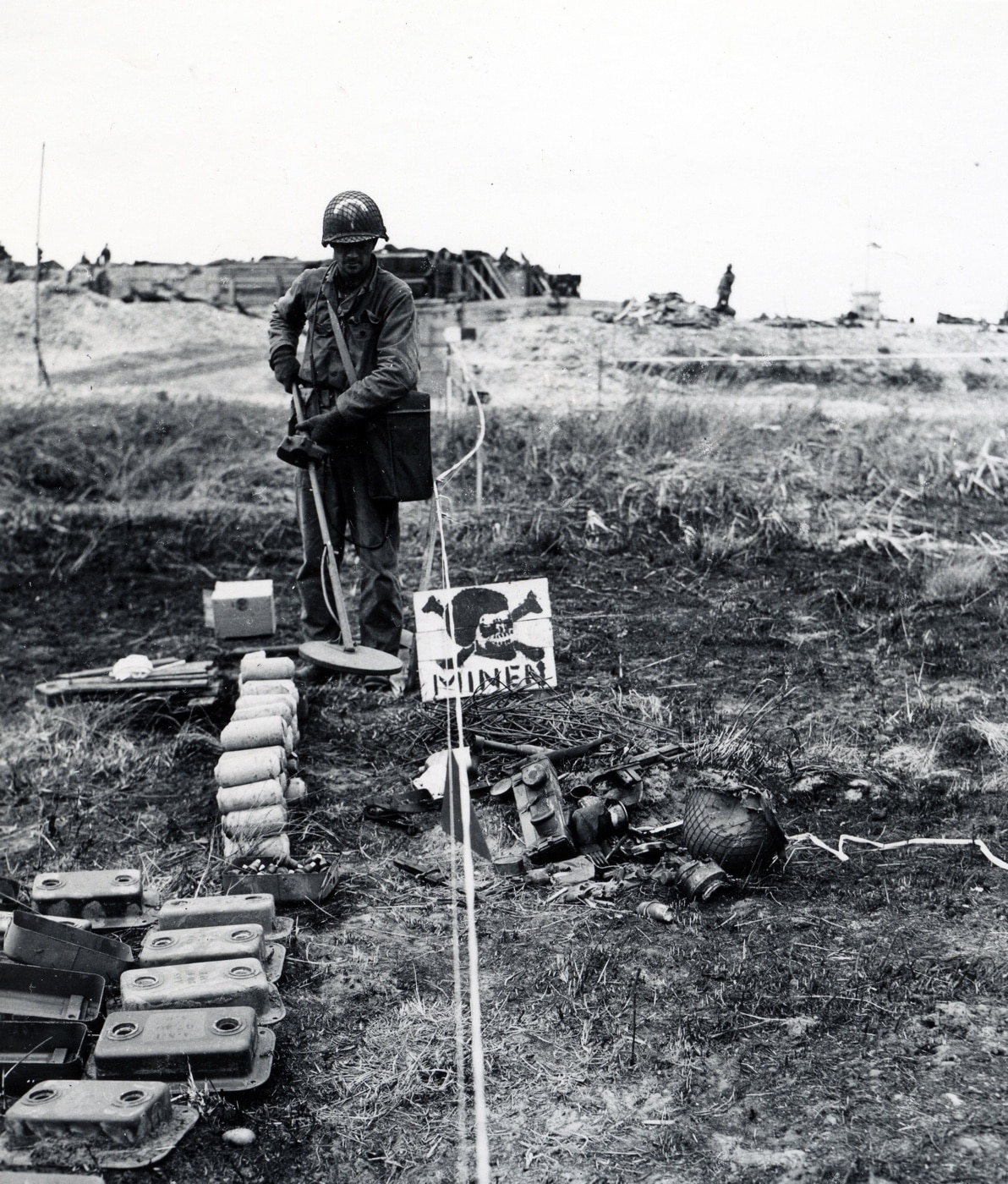
Beyond the obstacles, the German fortifications were waiting, with almost the entire American landing zone under enemy observation.
Enemy firing positions were laid out to cover the tidal flat and beach shelf with direct fire, both plunging and grazing, from all types of weapons. Each strongpoint was a complex system made up of elements including pillboxes, gun casemates, open positions for light guns, and firing trenches, surrounded by minefields and wire. The elements were connected with each other and with underground quarters and magazines by deep trenches or by tunnels.
Omaha Beachhead, U.S. War Department Historical Division, 1945
The German weapons on Omaha Beach were carefully emplaced to provide interlocking fire, with anti-tank guns sited to fire laterally down the beach at the more vulnerable sides of tanks or landing craft.
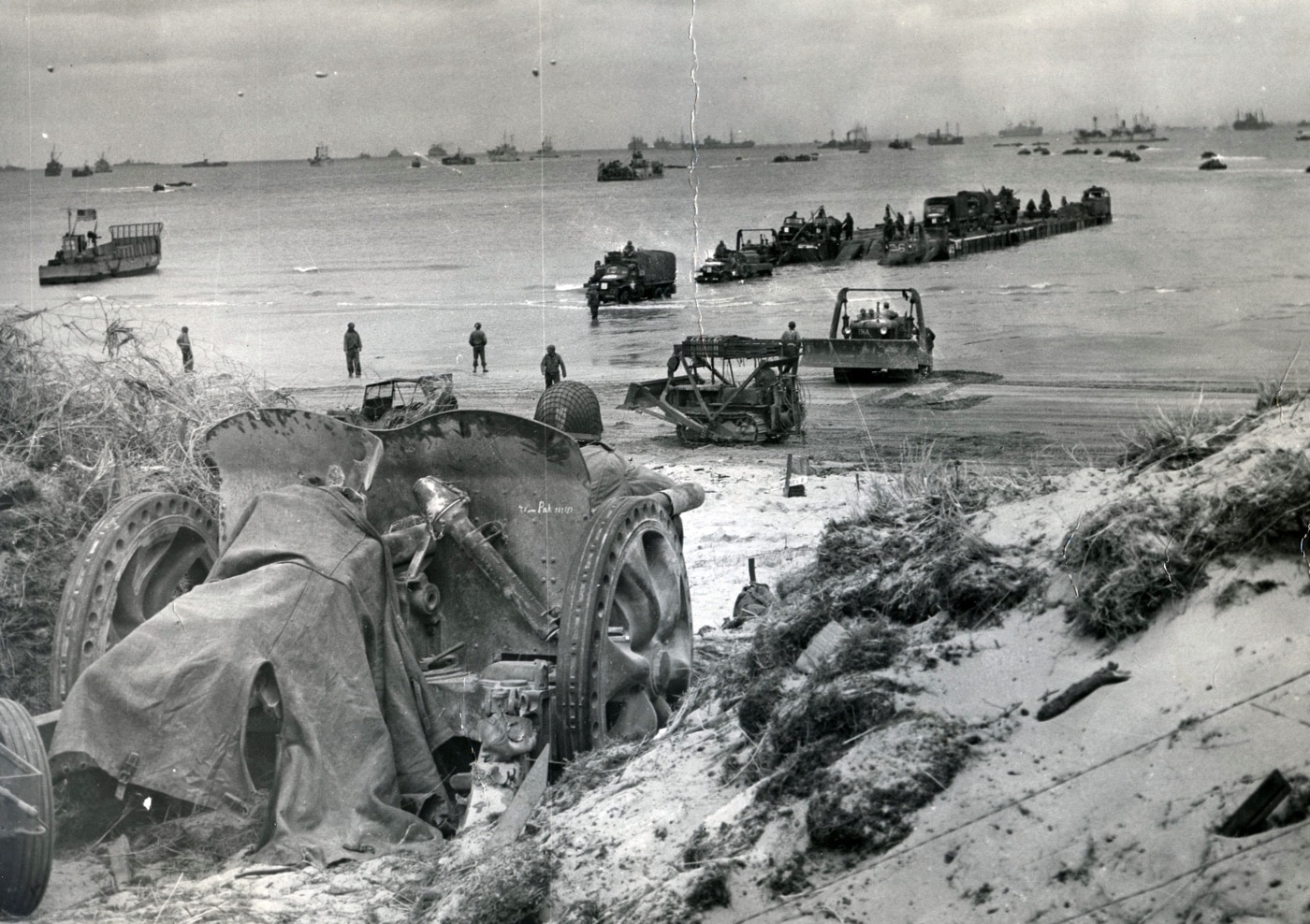
Nearly all weapons, machine guns as well as artillery pieces, were sited primarily to give lateral fires down the length of the beach, and the defense of a given sector usually depended as much on the flanking fire from neighboring positions as on the emplacements in the sector itself.
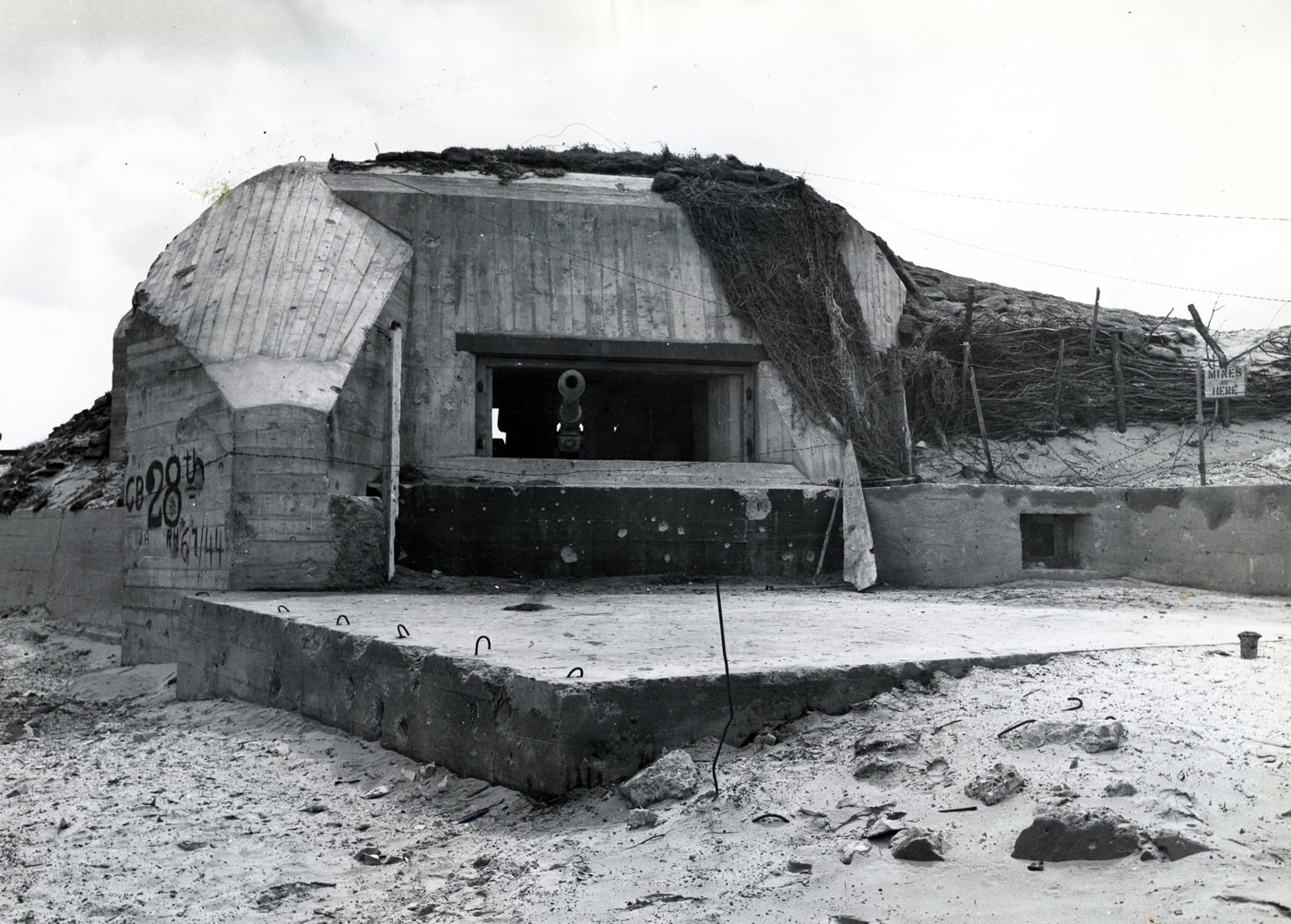
The Omaha sector was not strongly defended by coastal batteries of heavier guns. But at Pointe du Hoe, some 5,000 yards to the west, there was a battery believed to consist of six French-made 155-mm howitzers, mounted partly in casemates. This position was regarded as the most dangerous in the American zone, for guns of that caliber could cover not only the V and VII Corps landing beaches but also both transport areas.
While machine guns were the basic weapons in all emplacements, there were over 60 light artillery pieces of various types. Eight concrete casemates and four open field positions were designed for guns from 75mm to 88mm, while 35 pillboxes were occupied by lighter guns; and there were about 18 anti-tank guns (between 37mm and 75mm). The heavier guns were sited to give lateral fire along the beach, with traverse limited by thick concrete wing-walls which concealed the flash of these guns and made them hard to spot from the sea. Mortar positions were sometimes included in the strong points but were more frequently placed behind the bluffs. About 40 rocket pits were later found, located several hundred yards inland on the high ground and each fitted to fire four 32-cm rockets.
Omaha Beachhead, U.S. War Department Historical Division, 1945
This assessment of the Omaha Beach defenses came from the combat operations report of the USS LCI (L) 540, which landed troops of the 29th Infantry Division near Vierville:
The enemy’s placements of machine guns, mortars, and 88mm guns were so well hidden that it was very difficult to spot them accurately to make any counter-fire effective. This, coupled with the fact that the landing of troops could be expedited and made safer by not drawing enemy fire to the ship, kept any of the ship’s armament, consisting of five Oerlikons (20mm), from being used.
Utah Beach
Man-made defenses along the coast took various forms. At the beginning of 1944, construction activity markedly increased on the defensive belt.
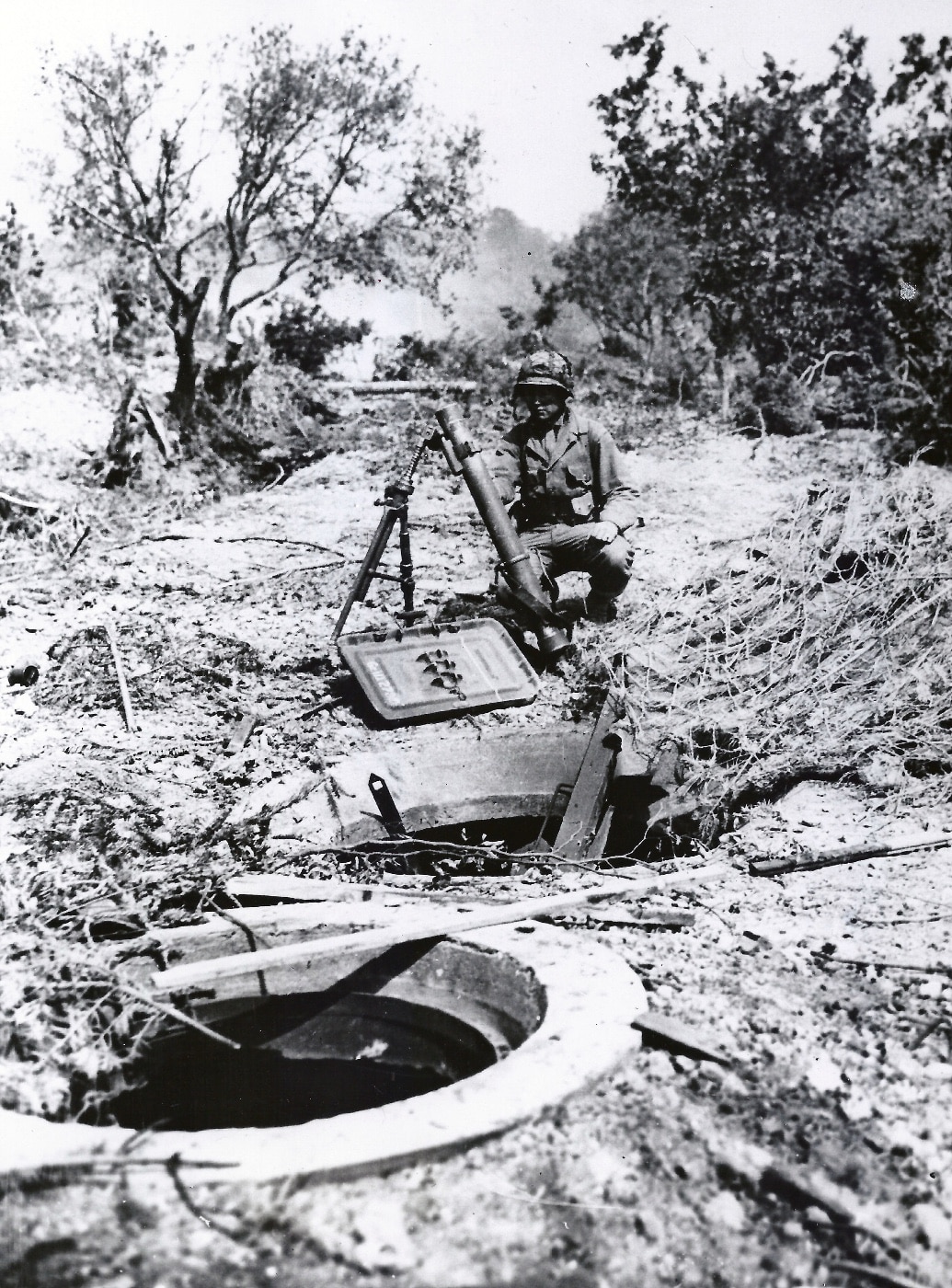
Rows of obstacles had been emplaced on the beach from 50 to 130 yards to seaward. These obstacles were in the form of stakes or piles slanted seaward, steel hedgehogs and Tetrahedra, and Element “C” or Belgian Gates, which were barricade-like gates constructed of steel angles and plates and mounted on small concrete rollers.
Defenses immediately behind the beach along the sea wall consisted of pillboxes, including tank turrets mounted on concrete structures, Tobruk Pits, firing trenches, and underground shelters.
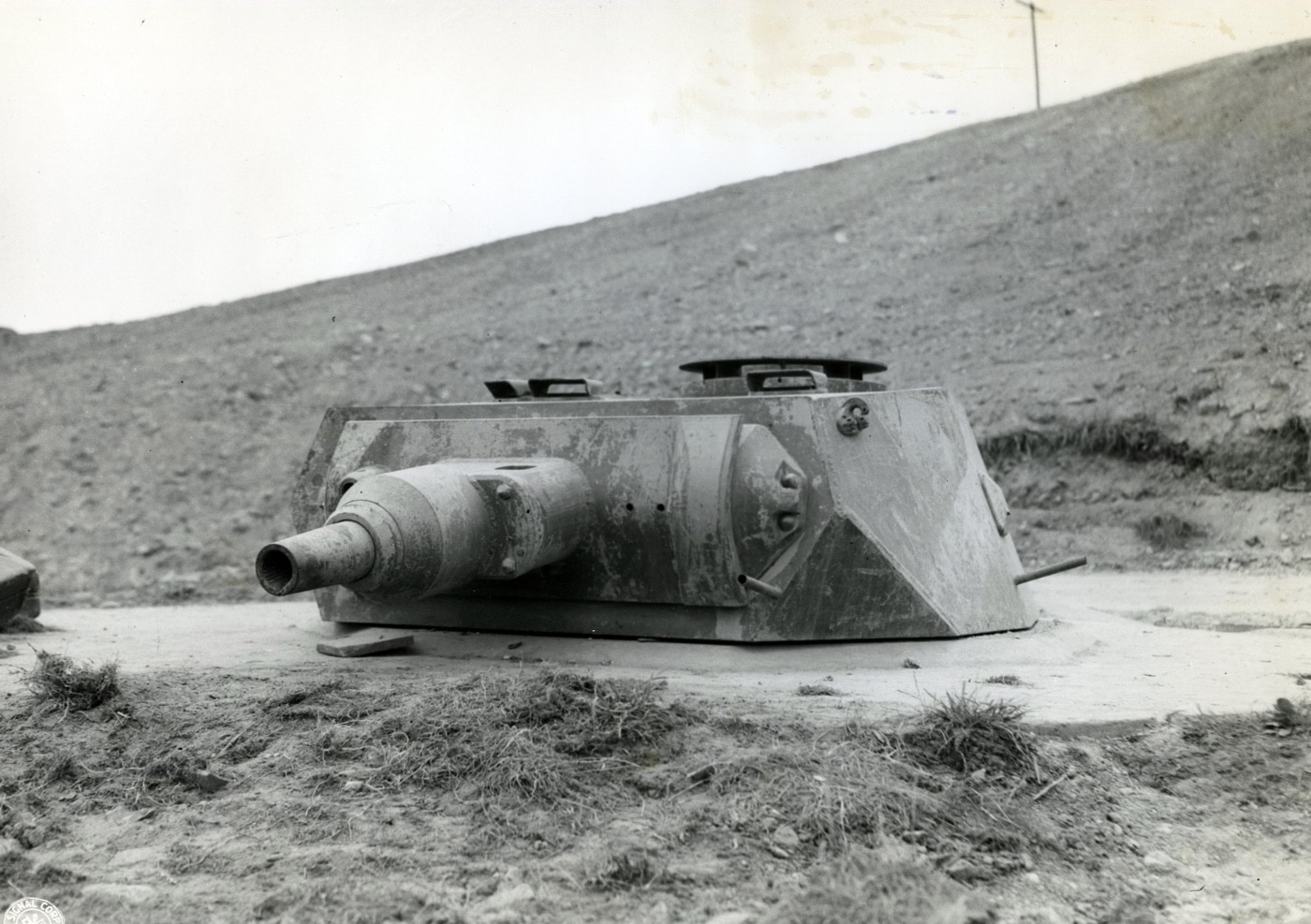
Defensive positions were usually connected by a network of trenches and protected by wire, mines, and anti-tank ditches. Infantry strong points made of concrete provided interlocking fire and were armed with both fixed and mobile light artillery pieces.
The fixed infantry defenses were more sparsely located in the Utah Beach area than at Omaha Beach, probably because the enemy relied on the natural obstacle provided by the inundated area directly behind the beach. At and near the roads leading to the beach, the defense was a linear series of infantry strong points typically armed with automatic weapons.
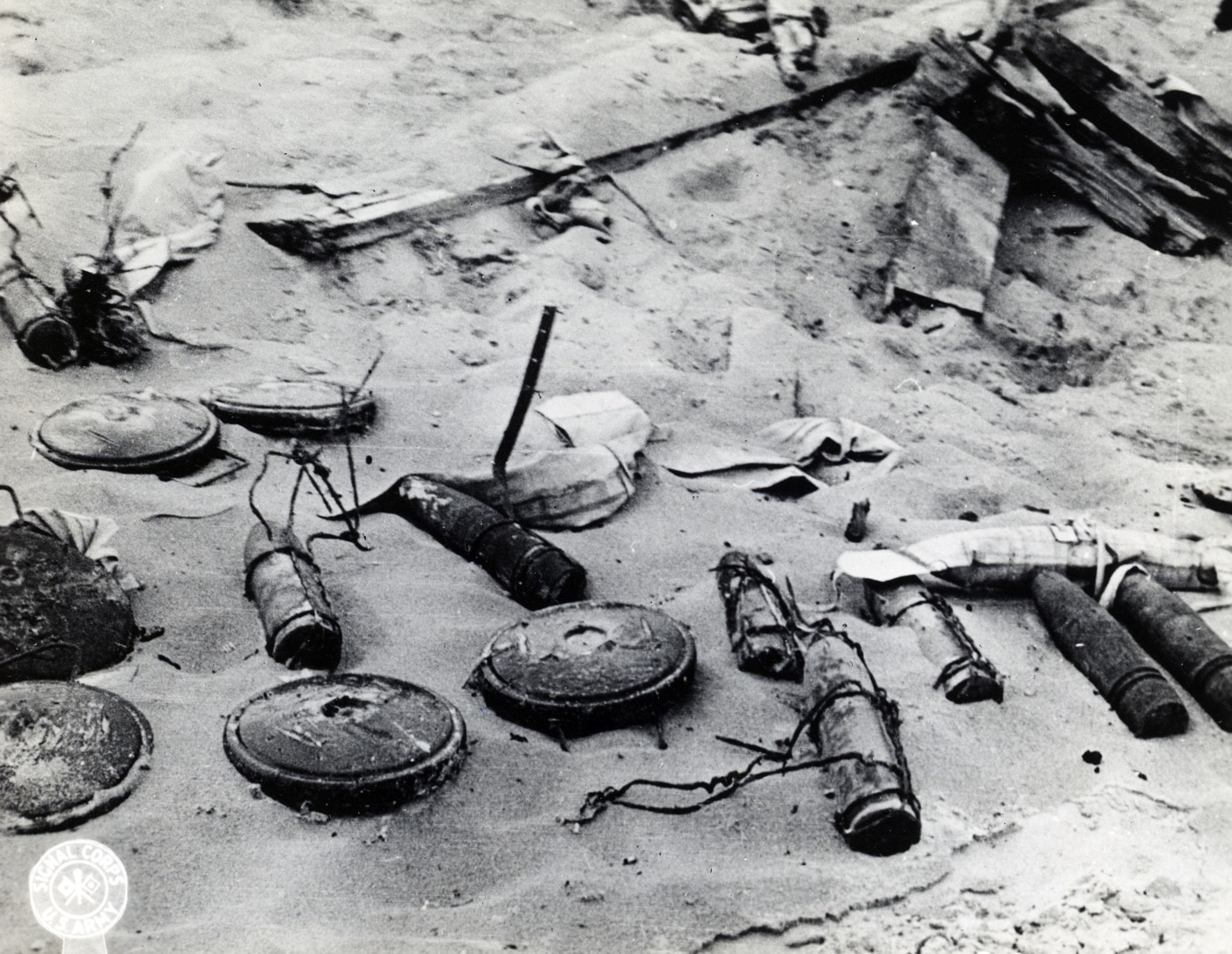
About two miles inland on the coastal headlands behind Utah Beach were several coastal and field artillery batteries. The most formidable batteries were located at Crisbecq and St. Martin-de-Varreville. Here heavy- and medium-caliber guns housed in a series of concrete forts were sited to cover both the sea approaches and the beach areas.
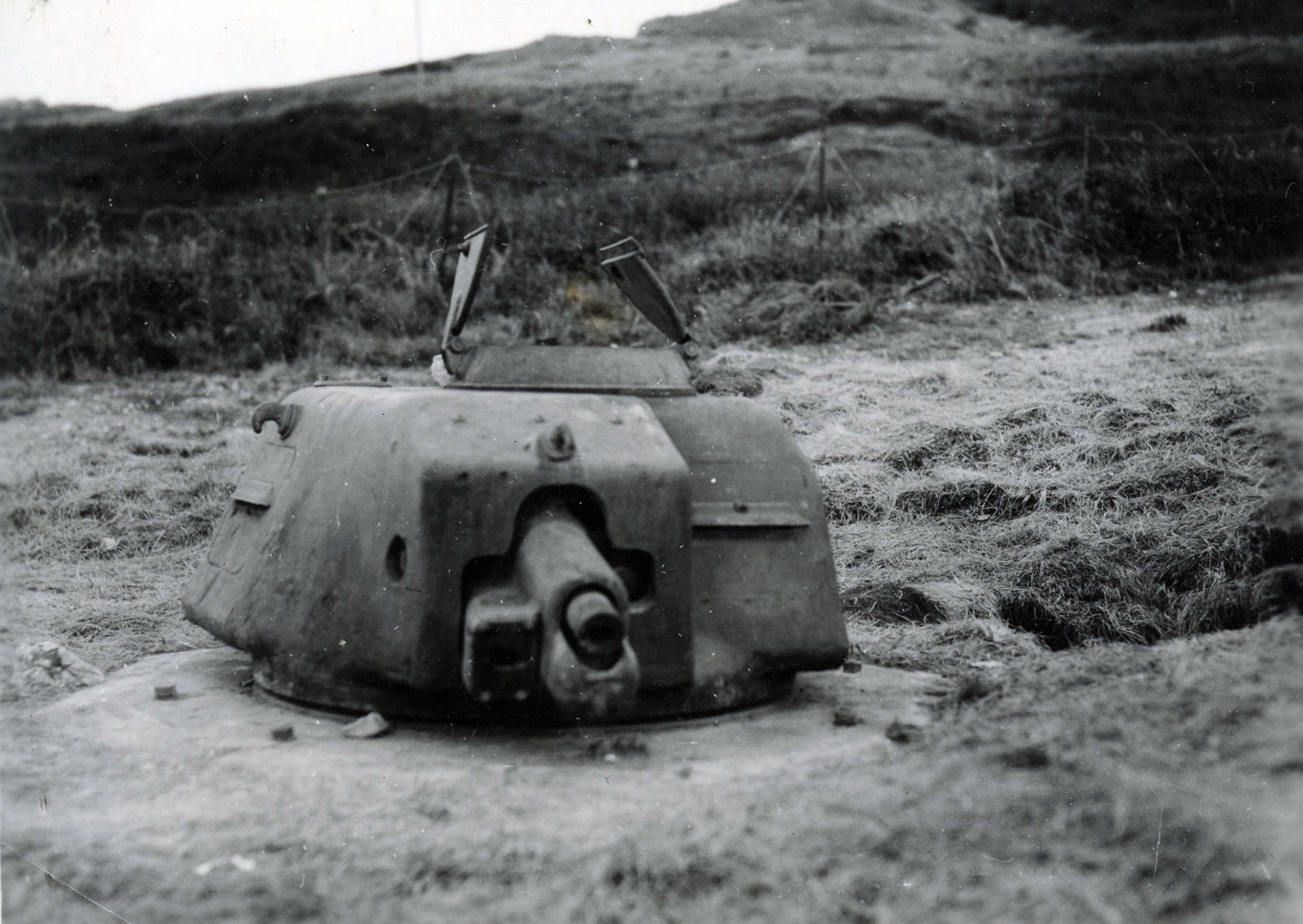
As expected, obstacles consisted mainly of steel and concrete pikes, some steel tetrahedra, and hedgehogs. Tank dozers worked effectively against some of the pilings and pushed the obstacles up onto the beach, but hand-placed charges accounted for the removal of most of them.
Allied Flamethrowers on Normandy Beaches
Allied planners anticipated the need for flame weapons in the fight against German Atlantic Wall bunkers. As it turned out, the actual impact of these weapons on D-Day was minimal.
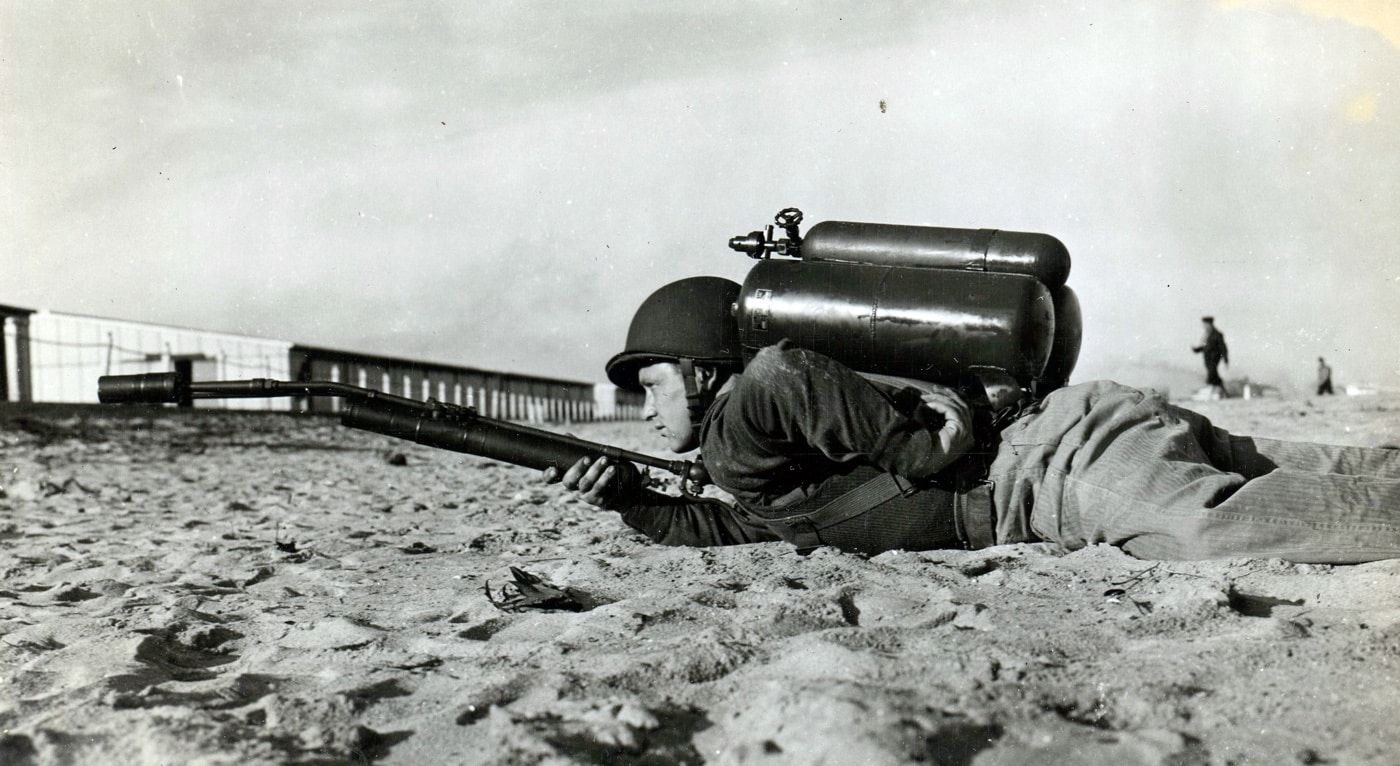
The British Churchill “Crocodile” flame tank was the best possible option, combining a heavily armored tank with a powerful flame projector. Unfortunately, most of the Crocodiles committed on D-Day were disabled on the beach before they had a chance to get into action.
U.S. assault troops were equipped with the rather wonky M1A1 flamethrower, and these weapons contributed very little on the Normandy beaches. Fortunately for the troops on Utah beach, there was less of a need for their M1A1 flamethrowers — and some had become disabled after being fully immersed in the higher-than-expected waters on the Utah beachhead.
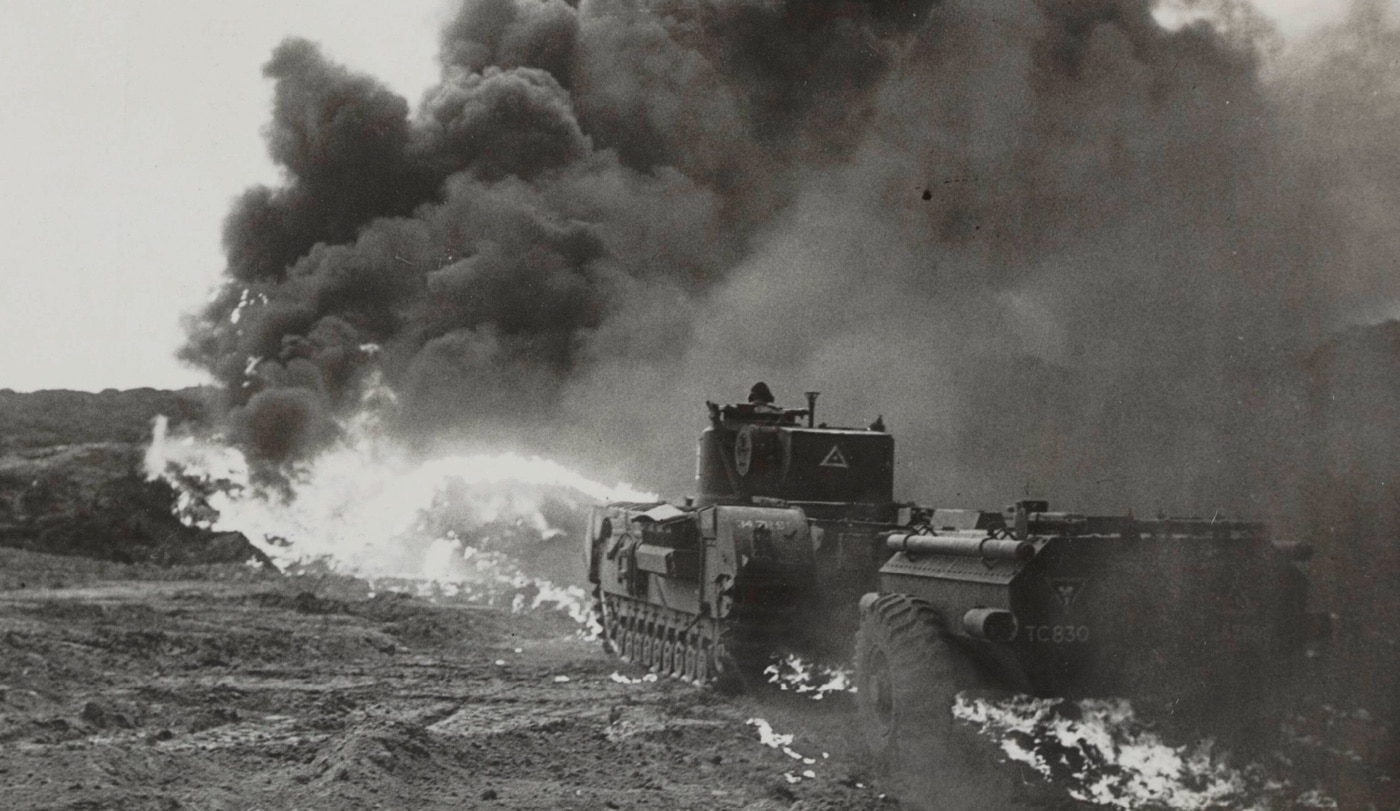
But on Omaha beach, there was a significant need for flame weapons, as the assault troops were often obliged to advance directly into the face of German fortifications. Flamethrowers might have been of great help but were nullified by two factors:
- many were lost or disabled in the surf during the landings, and
- the German fortifications were too well-defended to allow the man-carried flamethrowers to get close enough to be of any use.
Successful flame weapon actions were confined to the British beaches Sword & Gold. The 3rd Canadian Division used man-portable “Lifebuoy” flamethrowers in a successful attack on fortified houses in Tierceville.
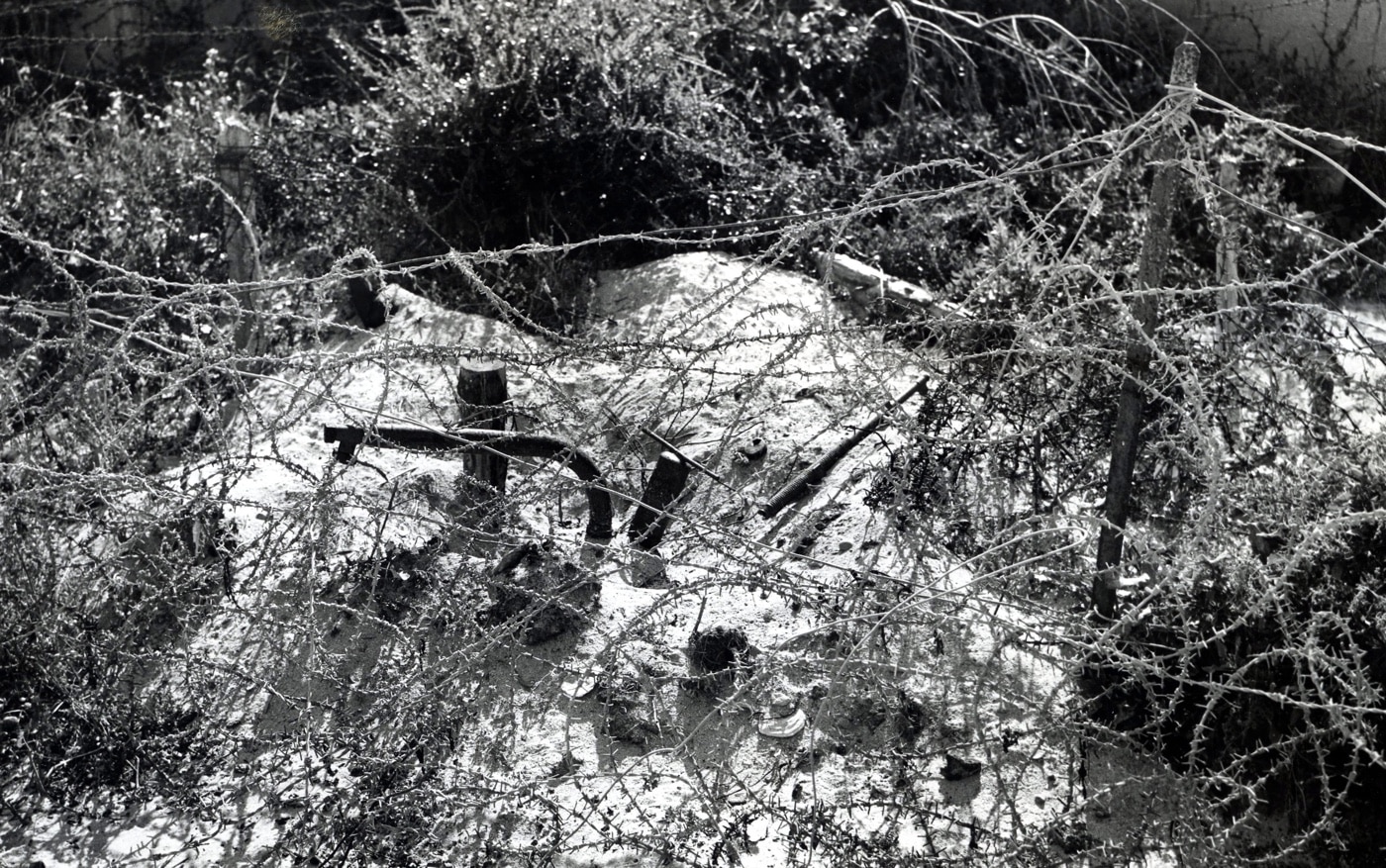
Two three-tank units of British Churchill Crocodile flame tanks landed on D-Day. All three that came ashore at Le Hammel were disabled within just a few minutes and were not able to work against the German defenses.
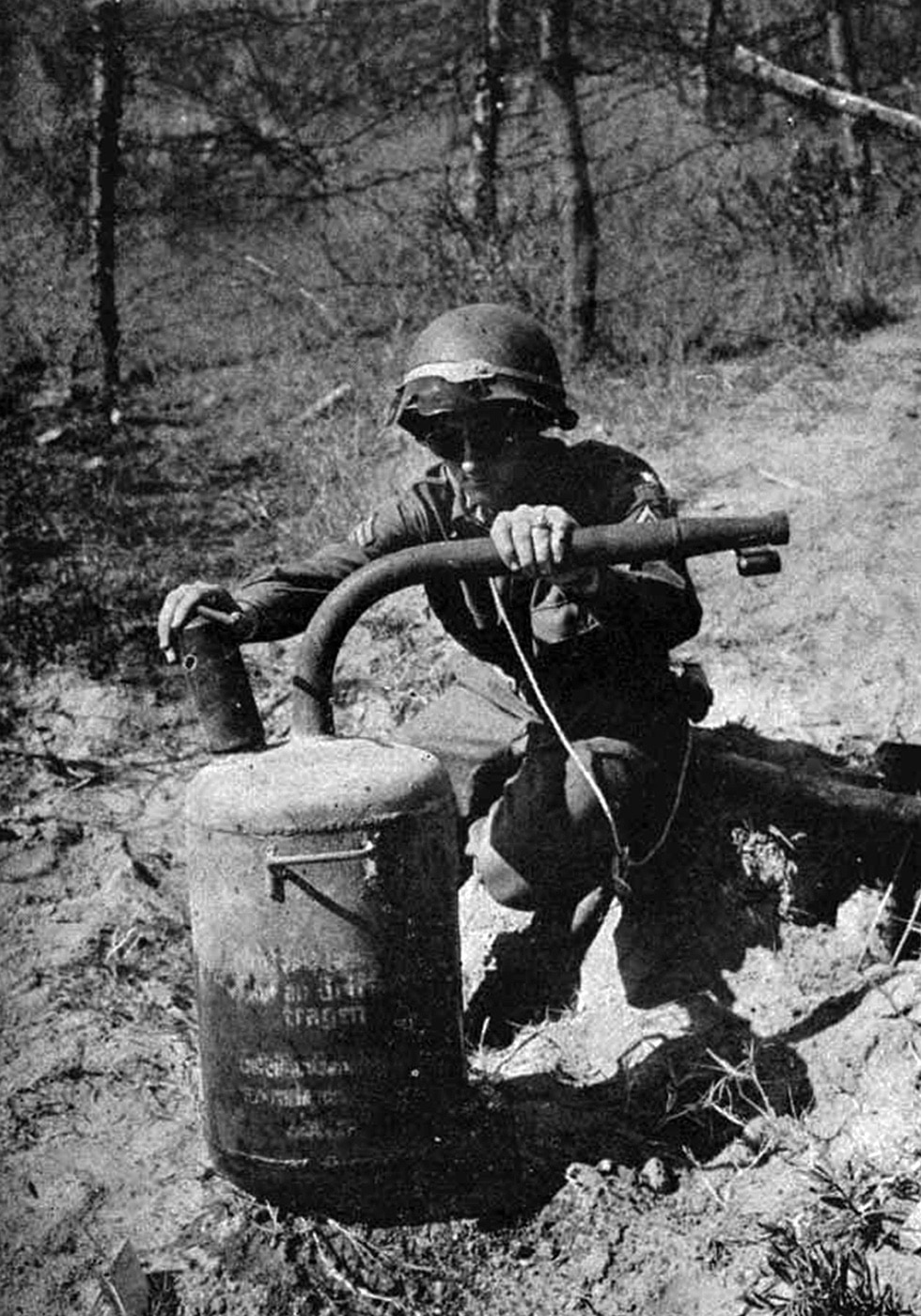
However, in the second troop of Crocodiles, one tank that landed at La Riviere was swamped in deep water, but the other two came ashore safely and provided support for the attacking troops.
Final Thoughts
With eight decades between us and Operation Neptune, the world has changed significantly. After the war, Germany denounced National Socialism and is considered a strong ally of the United States. Generations of U.S. soldiers, sailors, airmen and Marines stood watch with the German Bundeswehr against the encroachment of Communism and other totalitarian ideologies.
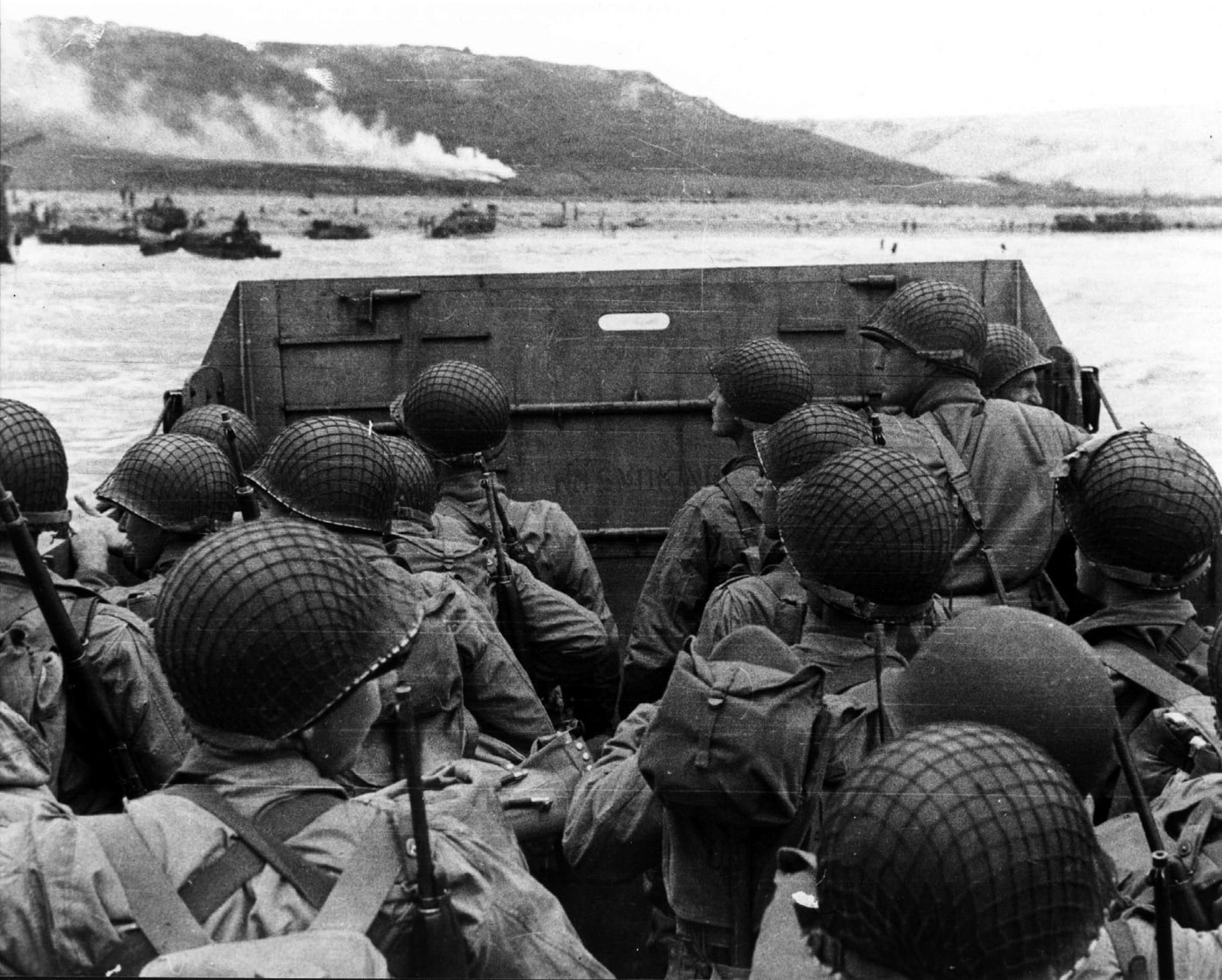
The world has seen unprecedented advancements in technology, medicine, science, energy, agriculture and freedom. None of these would have been possible if the men of the Allied Expeditionary Force hesitated when the ramps went down on the morning of June 6, 1944.
Take a moment to remember them for without their courage the world might be an eternally darker place.
Editor’s Note: Please be sure to check out The Armory Life Forum, where you can comment about our daily articles, as well as just talk guns and gear. Click the “Go To Forum Thread” link below to jump in!
Join the Discussion
Read the full article here











